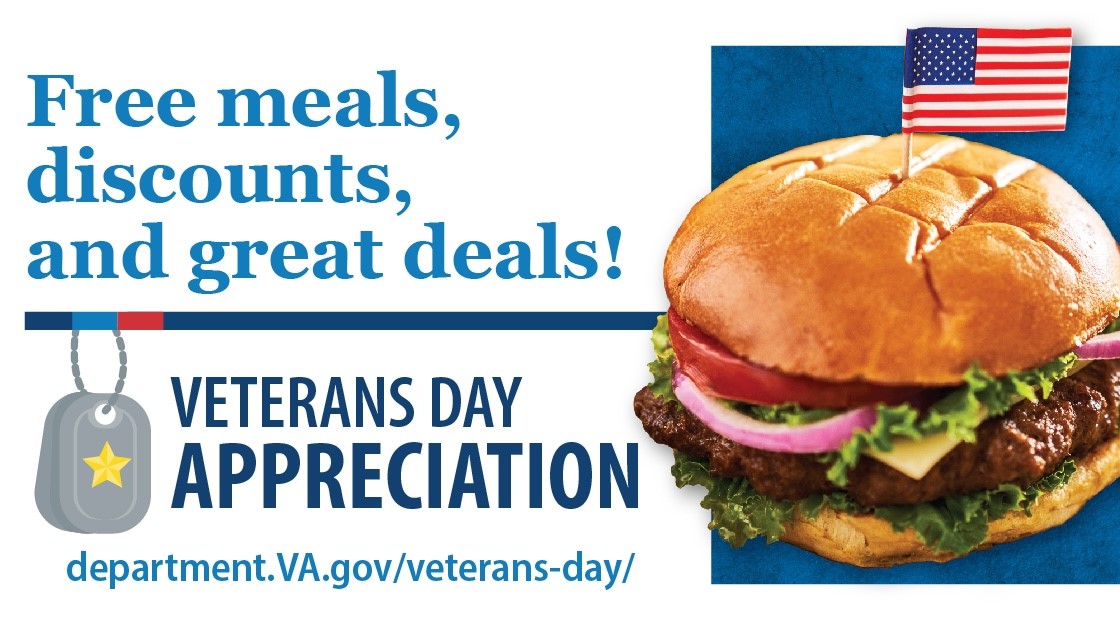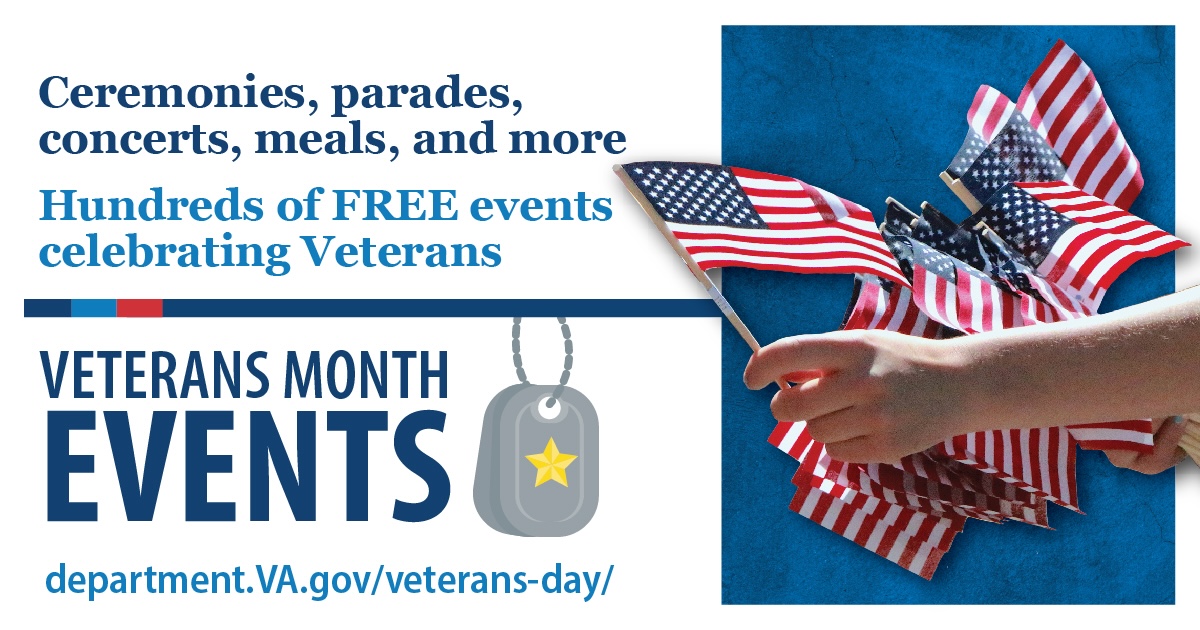
With roots traceable back to 1636, when the Pilgrims of Plymouth Colony passed a law that provided support for disabled soldiers, the U.S. has created the most comprehensive system of assistance for Veterans of any nation in the world.
Since then, we’ve seen support for Veterans grow from pensions for disabled Revolutionary War soldiers in 1776, to the first domiciliary and medical facility authorized by the federal government in 1811, to expanded benefits and pensions for the widows and dependents of Veterans in the 19th century. In 1917, we saw new Veterans benefits when the U.S. entered World War I including disability compensation, insurance for Servicemembers and Veterans and vocational rehabilitation for the disabled. By the 1920s the benefits were administered by three different agencies – the Veterans Bureau, the Bureau of Pensions at the Interior Department and the National Home for Disabled Volunteer Soldiers. These three agencies were consolidated into the Veterans Administration in 1930.
The responsibilities and benefits programs of the new administration grew during the following six decades to include the World War II GI Bill that addressed education, training, unemployment compensation and home loan guarantee benefits for Veterans. In 1973, the National Cemetery System became a part of VA.
The Department of Veterans Affairs Act of 1988 elevated the administration into the Cabinet-level department we know today. It was signed into law by President Ronald Reagan on Oct. 25, 1988, and came into effect under the term of President George H.W. Bush on March 15, 1989.
President Bush hailed the creation of the new department saying, “There is only one place for the veterans of America, in the Cabinet Room, at the table with the President of the United States of America.”
Five years ago, on VA’s 20th anniversary, President Obama spoke to the important role of caring for our nation’s Veterans. “…[W]hen our fellow citizens commit themselves to shed blood for us, that binds our fates with theirs in a way that nothing else can. And in the end, caring for those who have given their fullest measure of devotion to us — and for their families — is a matter of honor — as a nation and as a people.” Thanks to President Obama’s historic budget requests for VA and the support of Congress, VA is able to continue to honor our Nation’s promises to these unique and special citizens.
Fulfilling that sacred trust is the mission is of today’s VA and its nearly 340,000 employees, approximately 32 percent of whom are Veterans themselves.
To highlight our 25 years of service to Veterans, their families and survivors as the Department of Veterans Affairs, we’ll be sharing 25 facts you may not know about VA.
- VA still cares for the child of a Civil War Veteran, more than 100 children and spouses of Spanish-American War Veterans, and more than 4,000 children and spouses of World War I Veterans – who receive annual pensions from VA. As Secretary Shinseki said, “The promises of President Abraham Lincoln are being delivered, 150 years later, by President Barack Obama. And the same will be true 100 years from now—the promises of this president will be delivered by a future president, as yet unborn.”
- Slightly over 11 million of the approximately 22 million Veterans in this country are registered, enrolled or use at least one VA benefit or service. Over the next decade, the Department of Defense predicts that military separations will approach three million giving even more men and women access to VA’s many services.
- In the 25 years VA has been a cabinet agency, thanks to the strong support of Congress, numerous presidents, and the American taxpayers the budget has increased nearly three-fold. In this quarter century, America has shown its commitment to America’s Veterans through its support of VA. For fiscal year (FY) 2015, the president has proposed a $163.9 billion budget, a 6.5 percent increase over FY 2014, that will support VA’s goals to expand access to health care and other benefits, eliminate the disability claims backlog, and end homelessness among Veterans. The 2015 Budget request reflects a 35.2% increase in discretionary budget since 2009. The resources provided to VA over time allowed expansion in medical “points of care” including medical centers, Vet Centers and community-based outpatient clinics from 379 to 1,750; and saw benefits such as education, vocational rehabilitation, housing and homeless assistance expand exponentially.
- VA pioneered electronic medical records. In 1996, VistA, also known as the Computerized Patient Record System, was fully implemented. Whether a Veteran patient walks into a VA medical center in California or a community-based outpatient clinic in Maine, a VA provider can access that patient’s record.
- Sometimes known as “The father of modern transplantation,” Dr. Thomas E. Starzl, a World War II Navy Veteran, spent nearly 50 years with VA and its predecessor organization. Starzl, shares the Lasker-DeBakey Clinical Medical Research Award for 2012, given from the Albert and Mary Lasker Foundation, with Roy Y. Calne of the University of Cambridge in England, in recognition of their development of liver transplantation. Starzl began his VA career as a resident surgeon in the Chicago VA Research Hospital.
- More than 4 million Americans, including Veterans of every war and conflict, are buried in VA’s cemeteries on more than 20,000 acres of land. On Nov. 11, 1998, the Veterans Programs Enhancement Act of 1998 (Public Law 105-368) was signed into law, officially re-designating the National Cemetery System as the National Cemetery Administration and authorizes 100 percent funding for VA State Cemetery Grants Program. From 1992 to 2013, VA opened 20 new National Cemeteries, part of the “biggest expansion since the Civil War.”
- In each of the last four years, VA has processed more than 1 million disability compensation and pension claims – more than ever before. At the same time, we’ve increased decision quality. Veterans, their families and survivors received $227.5 billion for compensation and pension benefits over that 4-year period.
- VA’s telemedicine program and the Community-Based Outpatient Clinic program began in 1997, expanding Veterans’ access to earned care and services.
- The 33rd National Veterans Wheelchair Games were held in Tampa in 2013. Attracting more than 500 athletes each year, the NVWG is the largest annual wheelchair sports event in the world.
- In 1994, groundbreaking VA research demonstrated that one aspirin tablet a day reduced by half the rate of death and nonfatal heart attacks in patients with unstable angina.
- VA’s Center for Women Veterans and the Center for Minority Veterans were established by law in 1994 to ensure that women and minority Veterans are aware of benefits, services and programs offered by VA.
- In 1991, VA researchers developed an electrical stimulation system that helps patients move paralyzed limbs and in 2007, a new, bionic ankle debuted at Providence VA Medical Center in July 2007. VA doctors and researchers developed this high-performance prosthetic device, which unlike any other prosthesis propels users forward using tendon-like springs and an electric motor.
- In 2003, VA conducted 50 million patient visits – an all-time high. My HealtheVet, an online health portal that helped Veterans take an active role in maintaining their health, was launched. Today, VA health care facilities average 236,000 outpatient appointments each day or nearly 90 million total outpatient visits in 2013.
- For more than 25 years the “Stand Down” program has provided vital care, benefits and services to homeless Veterans. Stand downs and local, state and federal partnerships with VA have led to a 24 percent reduction in the number of homeless Veterans since 2010.
- The National Cemetery Administration’s Gravesite Locator was made available online in 2004. More than three million records showing where Veterans and their family members have been buried in VA’s national cemeteries were made available online. Records for those buried in private cemeteries with VA grave markers after 1997 are also available in some cases.
- In 2013, VA posted an all-time annual record of 629,000 home loans guaranteed; nearly 90 percent of all VA loans are made with no down payment. In 2012, VA guaranteed its 20 millionth home loan. In addition, VA maintains the lowest foreclosure inventory rate of any loan type on the market, despite the recent housing market crisis, and has helped prevent foreclosure for more than 335,000 Veterans since 2009.
- VA researchers and colleagues made headlines in May 2012 when they demonstrated that people with total paralysis could control robotic arms using only their thoughts. The revolutionary system called BrainGate, harnesses brain signals to command external devices. See the 60 Minutes story on BrainGate.
- The National Cemetery Administration bested the nation’s top corporations and other federal agencies in a prestigious, 2013 independent survey of customer satisfaction, garnering the highest score in either the private or public sector in the history of the survey. For the fifth consecutive time, NCA ranked above other public and private sector organizations on the American Customer Satisfaction Index survey.
- Since 2004, the American Customer Satisfaction Index survey has consistently shown that Veterans receiving inpatient and outpatient care from VA hospitals and clinics give a higher customer satisfaction score, on average, than patients at private sector hospitals.
- Since the Post-9/11 GI Bill went into effect in 2009, VA has paid more than $38.9 billion in tuition and benefits to 1.16 million Veterans, Servicemembers and their families; and to the universities, colleges and trade schools they attend.
- 1988, Nobel Prize was awarded to VA researcher Dr. Ferid Murad for his discoveries related to nitric oxide, a body chemical that helps maintain healthy blood vessels [this was VA’s third Nobel prize, the previous two went in 1977 to VA researchers Dr. Andrew Schally for his work on hormone production in the brain and Dr. Rosalyn Yalow for her development of radioimmunoassay techniques to detect and measure various substances in the bloodstream].
- VA transformed its paper-bound claims process into an electronic processing system that allows Veterans greater access to benefits and services online. The joint DoD/VA online portal eBenefits has more than 3.5 million users who are able to file claims, change family member status, grant power-of-attorney representation, and get letters of eligibility for home loans online. Today, more than 80 percent of VA’s compensation and pension rating claims inventory are in electronic form for digital processing.
- VA created the innovative public-private Blue Button Initiative in 2010, in collaboration with the U.S. Department of Health and Human Services (HHS), DOD and the Centers for Medicare & Medicaid Services. It expands consumers’ access to their own healthcare information—such as medical records, prescription information, medical claims, and lab data—so they can share it with health care providers, caregivers and others they trust. Blue Button has already been adopted by 500 insurers and health care organizations that collectively cover 100 million people.
- In 2010, VA reported a 70 percent success rate at seeing once-comatose patients return to consciousness at its polytrauma centers serving seriously wounded troops and Veterans. From USA Today, “’Of 97 troops or veterans admitted to these centers between January 2007, when the Emerging Consciousness program became fully operational, and the end of 2009, 67 have awakened,’ says David Cifu, VA national director, Physical Medicine and Rehabilitation. ‘Two of those were soldiers brought in from overseas battlefields — [Sgt. 1st Class Cory] Remsburg and Sgt. Tony Senecal.’” In this year’s State of the Union, President Obama recognized Remsburg, who was in attendance. “Cory is here tonight. And like the Army he loves, like the America he serves, Sgt. 1st Class Cory Remsburg never gives up, and he does not quit.”
- VA manages the 9th largest life insurance enterprise: $1.3 trillion in coverage, 6.8 million clients, and pays $11 million per day for VA administered and supervised insurance programs.
Topics in this story
More Stories
This 2024 Veterans Day discounts list will continue to be updated as we learn of more nationally available Veterans Day discounts, meals or other ways businesses and organizations want to give back to Veterans.
Here are instructions on the ways to renew your Veteran Health Identification Card.
November marks National Veteran and Military Families Month, highlighted by Veterans Day on Monday, Nov. 11. This list of Veterans Day and Veterans Month events is organized by state and will be continuously updated with more events throughout the month.







Very nice post. I just stumbled upon your weblog and wanted to say that I’ve
truly enjoyed browsing your blog posts. After all I’ll be subscribing to your rss feed and
I hope you write again very soon!
My website: Blog Writing – Antonio,
It blows me away that there are still a lot of homeless vets. What gives? Why, everytime I drive through Lancaster/York, are there homeless Iraq War veterans scattered about? It doesn’t seem right at all. How rampant is corruption in the local offices?
Hi Gareth,
Ending Veteran homelessness by 2015 is one of VA’s priorities. Honelessness in general is a difficult problem to tackle – for Veterans there are so many reasons that it’s challenging to address – and sometimes they want to stay on the streets. But VA keeps working to address the problem. From providing housing vouchers to homeless Veterans and families (read about that here: http://www.va.gov/opa/pressrel/pressrelease.cfm?id=2507) to holding Homeless Veteran Stand-downs across the nation (read about that here: https://news.va.gov/12504/stand-down-helps-fight-veterans-homelessness-you-can-help-too/ and here https://news.va.gov/12287/stand-down-offers-opportunities-with-employers/) to just working with our VSO partners to get information out to our Veterans about their benefits and programs, VA keeps striving to help our Veterans get off the street. Most importantly is we’ve seen a 24 percent decline in Veteran homelessness since 2010 (read about that here: https://news.va.gov/12036/the-great-american-tragedy-homelessness-among-our-veterans/) and as many of us are Veterans ourselves, we are truly focused on taking care of our military servicemember brothers and sisters.
So it’s getting better, and with everyone partnering on this it will be a solved problem.
VA has long way to go with that enriched history. Thanks for sharing the facts.
The VA has done great with inpatient/outpatient services I have received. The 1800 number is not so hot though, can never get through. But I do appreciate the online services. Unfortunately, I do think, however, the system is not sensitive to certain claims, such as MST’s, and certain PTSD’s. Constantly repeating the same things over and over can be devastating to some, and when you are on the outside looking in, you do not understand.
The worse thing ever done was electronic medical records; rather than creating a more accurate record of care it is a vehicle for time crunched personnel to write a short narrative and allow all “check boxes” to default to “normal” or no problem. Then when the records are reviewed for Claims, the VET is asked to explain why it is recorded on numerous dates that he had no pain, had no depression, had no PTSD symptoms, however he is taking major meds and sees Behavioral Health about twice a week with in-patient stays due to RAGE and suicidal/homicidal ideations! Easy way is NOT the best way when personnel are looking for short cuts, not better records! My opinion of course!
Item 7, of the one million claims that were processes each year how many was approved and how many were denied?
What does it matter? if their disability picture warrants service connection, then they get approved. If it doesn’t warrant SC, then they get denied.
In item # 1, it states that the VA is still taking care of a child of a Civil War veteran. That child would have to be around 100 years old ?? I am very curious as to what that child would be ” eligible” for unless the child became a veteran itself. I know the SS Administration just gives money to anyone that claims to have Attention Disorders or women with 10 kids. Just not sure about the VA
Hi Steve … yes you’re right, the child is probably in his/her 100s. While of course we can’t get into specifics as to what that person receives, he or she would be eligible for dependent benefits http://www.va.gov/opa/persona/dependent_survivor.asp. Thanks for your interest! Yvonne Levardi
No higher honor than being a patient, AND employee with VA. Thank you, and I’ve never been in better company.
Why does it take so long to receive answers to questions sent to VA?
The VA has taken great care of me. I appreciate them!